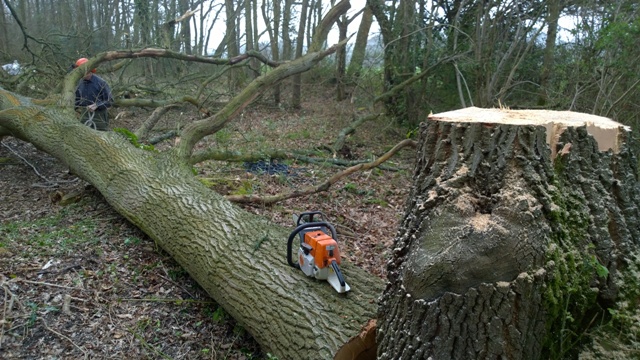
Wherever I have been managing woodland over the years, one job always seems to crop up on a regular basis: Removing Turkey Oak from broad-leaved woodland. Turkey Oak, Quercus cerris, is not native to the UK, although it has naturalised very well indeed. It was introduced from Southern Europe only as recently as the 1730’s because it was hoped that, being fast-growing, it would produce quality timber in a much shorter timescale than our two native oaks.
Unfortunately, although Turkey Oak is very fast growing in this Country, the timber it produces is virtually all sap-wood and has no durability whatsoever. Because it is so fast growing, Turkey Oak in our woodlands is a bit of a ‘bully’ and tends to out-compete most of its neighbours. It reaches the canopy relatively quickly and sends out a big, spreading, crown that suppresses the other trees around it. To give an idea of the speed of its growth, a Turkey Oak with a basal diameter of 2 feet can be as young as 70 years old, whereas a native oak of a similar size would more than likely be 130 years or more.
I have been involved with the management of Lodge Copse on the Barlavington Estate for 12 years now and we have been gradually removing the Turkey Oak there as part of the management plan. The Copse is a wonderful ancient woodland of 16 acres in size and has some fine native oak as well as a large amount of hazel coppice. The Turkey Oak is largely confined to the outer fringes of the Copse.
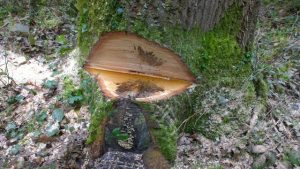
On 27th March I joined one of the volunteer managers there to take down two more. Both were big trees with basal diameters of around 2 feet. As soon as I put the sink cut into the first tree, there was an absolute cascade of water from the centre of the tree (see above picture), which showed that the sap was definitely rising. We had a winch rope on the tree to aid the directional felling, and it wasn’t long before the tree was on the floor.
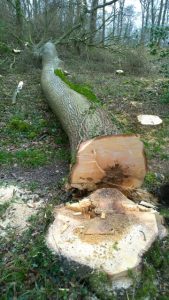
The second tree was bigger than the first and it had a couple of bracket fungi growing from the base, possibly Ganoderma spp.
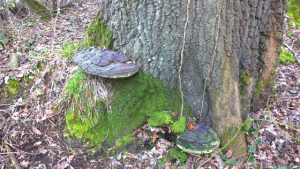
Because of this, and fearing a potentially large amount of rot lower down, I decided to fell the tree at a higher level than normal. Again, we had a winch rope attached to aid the felling. In the event, all went very smoothly and the tree was soon down.
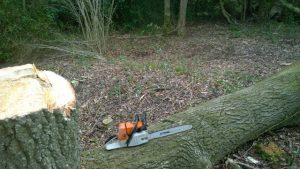
Two down, but still quite a few more to go. However, they can wait for future seasons as there is more than enough clearing up to do for now and the growing season is also upon us.
The amount of light that is now pouring in to where these two trees were standing has to be seen to be believed, and I am looking forward to seeing what wild flowers come up in the newly created clearings.

